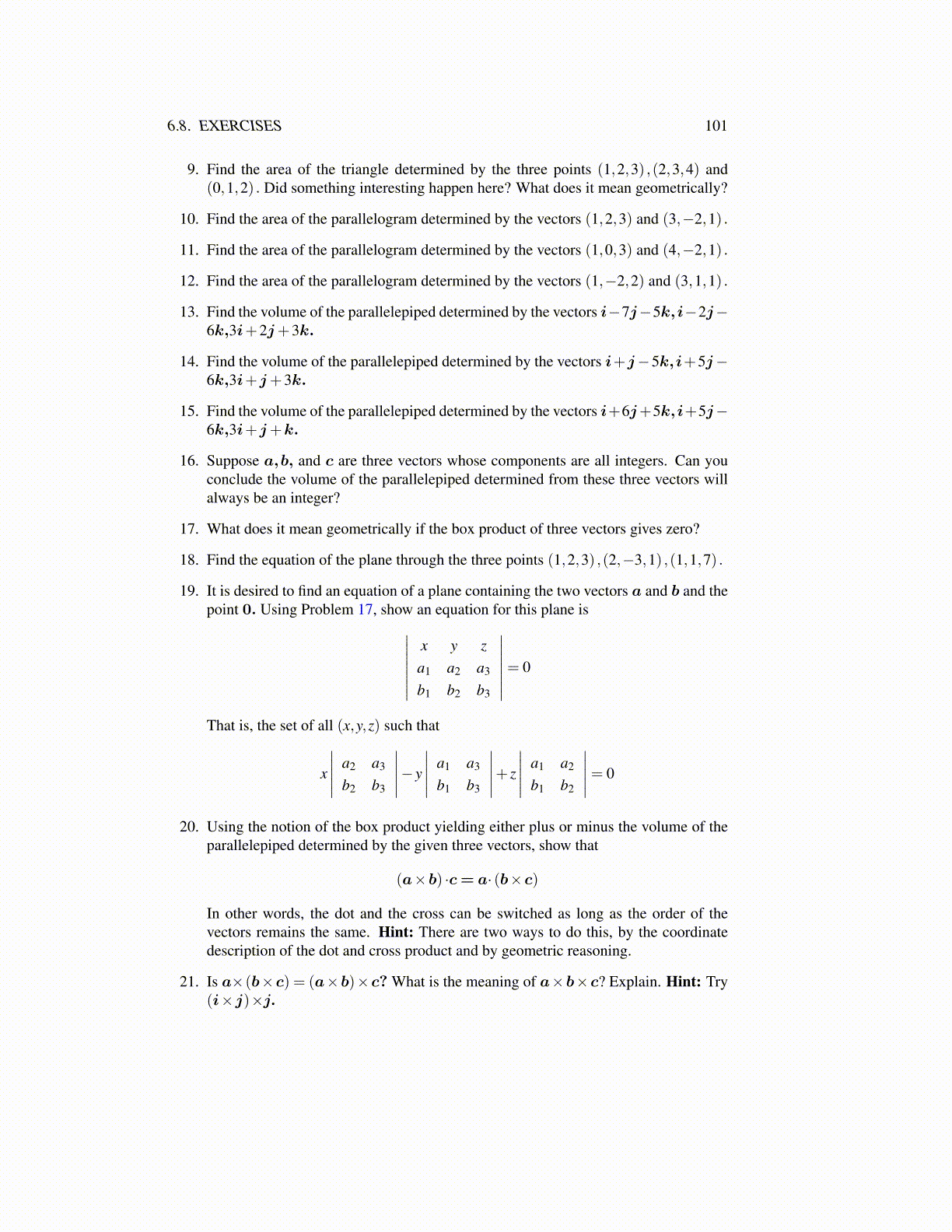
6.8. EXERCISES 101
9. Find the area of the triangle determined by the three points (1,2,3) ,(2,3,4) and(0,1,2) . Did something interesting happen here? What does it mean geometrically?
10. Find the area of the parallelogram determined by the vectors (1,2,3) and (3,−2,1) .
11. Find the area of the parallelogram determined by the vectors (1,0,3) and (4,−2,1) .
12. Find the area of the parallelogram determined by the vectors (1,−2,2) and (3,1,1) .
13. Find the volume of the parallelepiped determined by the vectors i−7j−5k,i−2j−6k,3i+2j+3k.
14. Find the volume of the parallelepiped determined by the vectors i+j−5k,i+5j−6k,3i+j+3k.
15. Find the volume of the parallelepiped determined by the vectors i+6j+5k,i+5j−6k,3i+j+k.
16. Suppose a,b, and c are three vectors whose components are all integers. Can youconclude the volume of the parallelepiped determined from these three vectors willalways be an integer?
17. What does it mean geometrically if the box product of three vectors gives zero?
18. Find the equation of the plane through the three points (1,2,3) ,(2,−3,1) ,(1,1,7) .
19. It is desired to find an equation of a plane containing the two vectors a and b and thepoint 0. Using Problem 17, show an equation for this plane is∣∣∣∣∣∣∣
x y za1 a2 a3
b1 b2 b3
∣∣∣∣∣∣∣= 0
That is, the set of all (x,y,z) such that
x
∣∣∣∣∣ a2 a3
b2 b3
∣∣∣∣∣− y
∣∣∣∣∣ a1 a3
b1 b3
∣∣∣∣∣+ z
∣∣∣∣∣ a1 a2
b1 b2
∣∣∣∣∣= 0
20. Using the notion of the box product yielding either plus or minus the volume of theparallelepiped determined by the given three vectors, show that
(a×b) ·c= a· (b×c)
In other words, the dot and the cross can be switched as long as the order of thevectors remains the same. Hint: There are two ways to do this, by the coordinatedescription of the dot and cross product and by geometric reasoning.
21. Is a×(b×c) = (a×b)×c? What is the meaning of a×b×c? Explain. Hint: Try(i×j)×j.